More on the euro disaster and current account imbalances
By L. Randall Wray
This post first appeared at "Great Leap Forward”, my EconoMonitor blog.
Last week we looked at the claim that MMT has ignored current account imbalances among EMU members. That turned out to be fallacious. We went on to examine the claim that the Euro crisis is a simple balance of payments problem. That, too, is fallacious. If the EMU had been designed properly, it would not matter whether some member nations ran current account deficits—much as many US states run current account deficits. Instead, the problem is that the EMU separated the currency from fiscal policy—all the members adopted the Euro, but each was separately responsible for its own fiscal policy. Further, and this is the point to be explored in detail here, each was responsible for dealing with its own banks should a financial crisis hit.
Warren Mosler had long argued that a very likely path to a Euro crisis would come from a bank failure. With no equivalent to Washington to come to the rescue, each individual nation would have to bail out its own banks. That would add to government debt, cause interest rates to spike, and lead to a run out of banks that could not be stopped. Except by the center—the ECB—which was not supposed to do anything of the sort.
Think about that. When US banks start falling like dominoes, who do you call? Not the Secretary of the Treasury of the State of North Carolina! Nay, you call Uncle Sam and Uncle Timmy and Uncle Ben. Please, Uncles, can you spare, say, $29 trillion dollars to bail us out? (https://www.economonitor.com/lrwray/2011/12/14/the-29-trillion-bail-out-a-resolution-and-conclusion/.)
When Irish banks started failing, who did they call? Well, not Fritz in Frankfurt. Let’s see. Total Irish debt was right about ten times Irish GDP (give or take a Euro or two) thanks to the most profligate bankers the world has ever seen. (The US only managed five times GDP—pikers!) Irish bankers had never seen a bad loan they didn’t like. So they politely asked the nice guys in the Irish Treasury to please, please, take over all our bad debts or the economy will crash. And recalling the potato famine, the government took them all. That busted the budget and the government delivered the famine, anyway.
Sergio (Remember him? This is a response to his argument that MMT’s predictive success is “spurious”—see last week’s blog.) sees all this as a current account imbalance. Those Irish and Icelander consumers just bought too many imports. Living the high life up north.
OK, here’s Ireland’s sectoral balances:
Before the GFC hit, we observe that the Irish government is following the neoliberal advice, running budget surpluses. It also has some very small current account deficits (shown as positive because the graph plots the mirror image capital account surplus). Both of these are “leakages” from the circular flow of income that has to be offset by an injection in the form of a private sector deficit. Now, you can, I suppose, blame profligate Irish consumers for their deficits or you could just as easily blame the government for its surpluses.
In any event, up to 2007 there is nothing that would cause a mainstreamer to worry about Ireland—and it is no secret that mainstreamers thought Ireland was the model of success. But boy-oh-boy did she blow up. Was it the miniscule current account deficits? No. It was the indebtedness of the financial sector—the bank bad loans. Certainly matters were made worse by indebted consumers, with debt fueled in Ireland (as in many other places) by a real estate bubble. But it is a massive stretch to claim that Ireland’s problems resulted from runaway current account deficits. Ireland could have run a continuous current account balance and she still would have exploded—see below.
In response to the banking crisis, the government blew up its budget trying to bail-out the financial system. In truth (as I’ve written about elsewhere) this was an act of Irish charity to save central Europe’s banks; the smart thing to do would have been to default on all the external debt and nationalize the banking sector. (Some say that would have been illegal within the framework of the EU; so be it!) I won’t go into the Icelandic crisis but exposing the banking problems in both Ireland and Iceland as well as the links between “periphery” (and even non-euro) banks and the big banks in the center was the opening salvo of the Euro crisis. Suddenly the banking emperors had no clothes.
And as the Irish government’s budget blew up, investors took a close look at their portfolios of Euro government debt and realized they were exposed to huge risks, too.
Of course, as economies slowed down, most of the other Euro nations also had deteriorating budget balances; and many also found it hard to sell exports. Germany—as Jan Kregel had long ago predicted (see the blog last week)—continued to do very nicely, thank you, as the whole Euro system was constructed to its benefit. It was the low cost producer and the safest place to park Euros. The rest of Europe marched its way toward oblivion.
Here’s Italy, which after the fall of Greece, Portugal, and Spain is expected to be the next shoe to drop:
If Italy were a sovereign nation, it’d be hard to see the problem. Small current account deficits, positive domestic private sector surplus (except in the earliest two years of the GFC) and moderate budget deficits that offset these. No worries here, right? There aren’t many sovereign nations in the world that look a whole lot better to a mainstreamer—only “beggar thy neighbor” mercantilist nations like Germany will have domestic private and government budget balances “better” than this. And yet Italy is experiencing a bank run, high unemployment, imposed austerity and speculation that it will default on its government debt. It might even be forced to leave the EMU. How could anyone—let alone an Italian economist—attribute Italy’s problems to profligate consumption of imports? Heck, back in the bad old days before the EMU (when Italy had its “high” inflationary Lira) it actually ran current account surpluses. It was the set-up of the EMU that killed Italy’s exports—exactly as Jan Kregel had predicted.
France? Well, it is not in the dire straits of a Greece or Spain, but it is talking austerity and there are rumblings of problems even there. Strange. Until the crisis hit it had very small current account deficits; yet it always had significant private savings. If you wanted to point your finger at anything, it would have to be the government deficit–that is, if you did not understand that sectoral balances must, well, balance. Budget deficits exploded as the private sector retrenched and tried to boost savings to deal with all the uncertainty. Given the current account deficit (which grew, but not all that much) the budget had to move to deficit.
Note also that as in the case with Italy, France ran current account surpluses until it adopted the Euro. So, again, Kregel had this correct: the set-up of the EMU favored German exports. And yet it is highly misleading to claim that the current crisis is just a payments imbalance. Rather, it is necessary to understand why the EMU suffered from a design flaw and as well to understand the Godley sectoral balance in order to understand why a current account deficit matters: given a balanced private sector account, a current account deficit necessarily implies a budget deficit. And the EMU was set up to punish budget deficits. That was the whole idea behind delinking fiscal policy from the currency. It was flaw by design.
There’s an interesting story that fits well across most of Euroland. Budget deficits and government debt were small relative to GDP all the way up to the GFC—if these were sovereign nations certainly small enough that no concerns should have been raised. Take a look:
While most countries violated Maastricht criteria, the ratios were not high for sovereign nations. Lest you think that Italy and Greece were always beyond the pale, recall that Japan keeps interest rates at about zero with a debt ratio of 200%. So the MMT argument is that as individual sovereign nations, there was no question of government solvency among any of these nations. But by joining the EMU, suddenly solvency of every one of them was thrown into question. Following Charles Goodhart’s papers in 1996, 1997, and 1998, MMTers had long compared these debt ratios to those of US states. We argued that from the get-go they were all orders of magnitude too high for nonsovereign members of a monetary union—five times, and more, higher than debt ratios of US states. It was a question of when, not if markets would recognize this.
As Keynes remarked, markets can remain irrational a lot longer than you think they can—and in this case they did. We expected interest rates to diverge earlier than they did (this was a topic of several pieces by Stephanie Kelton in the early 2000s). But when the crisis hit, interest rates finally did diverge:
In our view, the “convergence” period in the mid 2000s was the period in which markets were remaining irrational—either not recognizing that EMU states were like US states and hence vastly over-indebted, or markets were presuming that the ECB would backstop the states even more securely than Uncle Sam backs US states. Finally the divergence that we expected to be “rational” returned in 2008. The convergence was an aberration; the divergence is “normal” for states that can become insolvent.
Recall from last week that Kregel had predicted that the Euroized union would not become a major net exporter to resolve the “race to the bottom” deflationary internal dynamics. (And recall that Germany’s mercantilist policies would impart an EMU-wide deflationary force as other nations would cut demand to hold wages in check in order to compete with low German labor costs. This internal pressure could be offset only if EMU members could find external demand.) For completeness, let’s see how well that prognosis held up:
We can see a strong cyclical movement of the balances—as government budgets move toward balance, a recession is created which restores budget deficits that also move the private sector sharply back to surpluses. But formation of the EMU really had no discernible impact on the overall current account balance. Again, there is no story to be told here—exactly as Kregel predicted. The Euro area continues to run small current account surpluses (with a small deficit only in 2008 when global growth turned downward) that are not sufficient to overcome the internal deflationary dynamics. Something like three-fourths to 80% of all the current account surpluses run by EMU members are due to those of Germany—which sucks demand (mostly) out of its fellow members. This is why most EMU members suffered chronic high unemployment even before the GFC.
To summarize the point about sovereignty, let me quote from a 2001 piece by Warren (just two years into the euro experiment):
“The euro-12 nations once had independent monetary systems, very much like the US, Canada, and Japan today. Under EMU, however, the national governments are now best thought of financially as states, provinces, or cities of the new currency union, much like California, Ontario, and New York City. The old national central banks are no longer the issuers of their local currency. In their place, the EMU has added a new central bank, the ECB, to manage the payments system, set the overnight lending rate, and intervene in the currency markets when appropriate. The EP (European Parliament) has a relatively small budget and limited fiscal responsibilities. Most of the governmental functions and responsibilities remain at the national level, having not been transferred to the new federal level. Two of those responsibilities that will prove most problematic at the national level are unemployment compensation and bank deposit insurance. Furthermore, all previous national financial liabilities remain at the national level and have been converted to the new euro, with debt to GDP ratios of member nations as high as 105%, not including substantial and growing unfunded liabilities. These burdens are all very much higher than what the credit markets ordinarily allow states, provinces, or cities to finance.” https://www.epicoalition.org/docs/rites_of_passage.htm
Note how Warren mentioned the problem with bank deposit insurance—individual euro nations were responsible for their own banks. Warren went on in the same piece:
“Since inception a little over two years ago the euro-12 national governments have experienced moderate GDP growth, declining unemployment, and moderate tax revenue growth. Fiscal deficits narrowed and all but vanished as tax revenues grew faster than expenditures, and GDP increased at a faster rate than the national debts, so that debt to GDP ratios declined somewhat. Under these circumstances investors have continued to support national funding requirements and there have been no substantive bank failures. Furthermore, it is reasonable to assume that as long as this pattern of growth continues finance will be readily available. However, should the current world economic slowdown move the euro-12 to negative growth, falling tax revenues, and concerns over the banking system’s financial health, the euro-12 could be faced with a system wide liquidity crisis. At the same time, market forces can also be expected to exacerbate the downward spiral by forcing the national governments to act procyclically, either by cutting national spending or attempting to increase revenue.”
Ok, an economic slowdown would widen deficits and force government to tighten procyclically—slowing growth and actually worsening budgets. That recognition then led Warren to a series of questions about the behavioral and policy responses:
“The inherent instability can be expressed as a series of questions:
*Will the euro-12 economy slow sufficiently to automatically increase national deficits via the reduction of tax revenues and increased transfer payments?
*Will such a slowdown cause the markets to dictate terms of credit to the credit sensitive national governments, and force procyclical responses?
*Will the slowdown lead to local bank failures?
*Will the markets allow national governments with heavy debt burdens, falling revenues and rising expenses the finance required to support troubled banks?
*Will depositors lose confidence in the banking system and test the new euro-12 support mechanism?
*Can the entire payments system avoid a shutdown when faced with this need to reorganize?”
We now know the answer definitively: in every case the EMU response increased instability. The bank runs are now in full force. The Target 2 mechanism that I discussed a couple of weeks ago has softened the blow but actually increased the potential for massive defaults. It is worthwhile to look at Warren’s conclusion from a decade ago:
“Water freezes at 0 degrees C. But very still water can be cooled well below that and stay liquid until a catalyst, such as a sudden breeze, causes it to instantly solidify. Likewise, the conditions for a national liquidity crisis that will shut down the euro-12’s monetary system are firmly in place. All that is required is an economic slowdown that threatens either tax revenues or the capital of the banking system.
A prosperous financial future belongs to those who respect the dynamics and are prepared for the day of reckoning. History and logic dictate that the credit sensitive euro-12 national governments and banking system will be tested. The market’s arrows will inflict an initially narrow liquidity crisis, which will immediately infect and rapidly arrest the entire euro payments system. Only the inevitable, currently prohibited, direct intervention of the ECB will be capable of performing the resurrection, and from the ashes of that fallen flaming star an immortal sovereign currency will no doubt emerge.”
And that gets us to the final problem with focusing on the current account balance. By construction, the capital account balance is the mirror image of the current account since the flows of goods, services, and factor payments have to be “paid for”. But as I said, that is a very tiny fraction of “capital flows”. If a German bank makes a mortgage loan of 100K euros to a Spanish resident to buy a house, there is no capital flow record as nothing was imported (factor incomes get reflected in current account balances, but financial transactions themselves do not). But just as a current account deficit gets a nation indebted, so do financial transactions. With real estate bubbles all over the US, Australia, the UK, and Europe a lot of this kind of cross-border indebtedness was created. Again, if one focuses on imbalances of current and capital accounts, all this will be missed.
Further, what has really exploded over the past couple of decades is financial institution indebtedness—“banks” owing other “banks” (many of these are what Paul McCulley called “shadow banks” which are not technically banks and are not regulated or backstopped to the same degree; arguably it really was the shadow banking sector that blew up the globe). As I’ve discussed, Minsky saw this as part of the transition to “money manager capitalism” while others named it “financialization”. No matter what it is called, it created huge risks that a relatively minor problem in one institution could spread quickly throughout the whole global financial system.
And that, folks, is precisely what happened in 2007. It is still happening. It will not stop until all the big financial institutions are shut down. But that is a topic for another day. (My gosh, is there anyone alive who still believes these institutions are solvent? They are held up by nothing but fraudulent accounting built on pervasive fraud.)
One of the goals of European integration was to free up labor and capital flows, removing barriers so that factors of production could cross borders. Indeed, that was a primary reason for adopting the single currency. Whether or not that was a good idea, and whether or not it worked, is a topic beyond our scope. What is important in the context of the current crisis is that it enabled banks to buy assets and issue liabilities all over Euroland—which they did with abandon. Their risky and fraudulent activities were fueled by the deregulation and desupervision of banking contained in the Basel Accords, which allowed European banks to partake in the same dubious schemes that Wall Street’s banks pursued. And because of the way the EMU left all responsibility for crisis response to individual members, a crisis was sure to bring the down the whole house of cards.
This is, of course, what got Irish banks into trouble, as they ramped up lending across Europe, growing their liabilities to multiples of Irish GDP. Then, when their bets went bad, the Irish government had to bail them out, boosting fiscal deficits and government debt into uncharted territory. Again, this was a design feature of the EMU and the European Union more generally: banks were freed to run up massive debts that would ultimately need to be carried by governments that, because they had abandoned currency sovereignty, were in no position to bear the burden.
That brings us to the growing run on banks. Again, this results from a Euro design feature because it enables bank depositors to costlessly shift euro deposits from one bank to another anywhere in the EMU. This is enabled by the “TARGET 2” facility (Trans-European Automated Real-time Gross Settlement Express Transfer System). Any depositor of a Spanish bank can move deposits to a German bank. Such a shift requires that the central bank of Spain obtain reserves that get credited to the central bank of Germany. If deposits tend to flow from the periphery nations, their central banks go ever more deeply in hock to the ECB to obtain reserves that accumulate in the account of the Bundesbank.
Now, moving deposits to German banks is a sure bet: if Germany leaves the EMU depositors will get appreciating Marks, and if Germany remains in the EMU, depositors have the safest euro deposits available. Why take a risk that Italy or Spain or Greece will leave the EMU, default on euro-denominated deposits, and redenominate them into a depreciating currency? Even in the best case scenario, the country that leaves the EMU will honor its euro debts only in domestic currency; in the worst case scenario it might not honor them at all. And while it is conceivable that Germany could refuse to honor euro deposits held in its banks by citizens of nations that leave the EMU that would seem to be a low probability. After all, Germany will want buyers for its exports—so why not honor the deposits, even if they must be converted to marks with the death of the EMU?
Of course, a currency union really must have something like a TARGET 2. In the US, depositors can shift deposits about and from the beginning in 1913 the Fed guaranteed that bank deposits clear at par. While we have District banks sprinkled around the country, it makes no difference whether a bank happens to be headquartered in South Dakota, New York, Missouri, or California. We settled the question about dissolution of the Dollar Union back in the days of the Civil War. So, no matter how much the crazies in Alaska or Texas might fantasize about it, there is a near zero probability that President Obama will have to face the dilemma ably handled by President Abe Lincoln.
In a financial crisis, troubled American banks may not be able to obtain reserves for clearing in the fed funds market but that is why we have a Federal Reserve System to act as lender of last resort. The Federal Reserve District Banks around the country are protected by the Mother Hens in Washington—the US Treasury and Fed Board of Governors stand behind them to ensure par clearing among regions and to recapitalize District banks if that should ever become necessary.
Private banks are free to accumulate debts of local and state government—and they can find themselves in trouble if these governments default on their debts. But there is no plausible scenario that these governments will leave the union and redenominate debts in another currency. If the governments default, and if the banks holding those debts become insolvent, then we’ve got the US Treasury and the Fed to resolve the private banks, too. Both the Fed and the Treasury can get stuck holding bank liabilities that cannot be covered by the debtor banks. Other creditors of failed banks can also suffer losses. But the Dollar Union will stand and only extremely inept policy by the Fed and Treasury would allow a run to develop on banks in one region as depositors shifted to banks in another. While incompetence cannot be entirely ruled out, it is extremely difficult to envision anything like what is going on in the EMU happening in the US.
The European TARGET 2 facility works much like the US par clearing system except that instead of District banks that are members of the Central Bank, we have member Central Banks without the same degree of central responsibility to support them. Will Greece’s Central Bank get recapitalized by the center? I wouldn’t bet on it. And who will recapitalize the ECB if that becomes necessary? That is why policymakers areconcerned about the flows of reserves and the growing indebtedness of member central banks to the ECB.
The EMU bank runs should accelerate in coming days, as remaining periphery depositors decide to take the safest bet by shifting deposits to German banks. And if that does happen, TARGET 2 ensures that the ECB will be stuck with trillions of euros of potentially uncollectible debts due to all the reserves it has been lending to central banks that have to finance the run to German banks. It all essentially comes down to the links and the design flaw: free “capital” flows, a single currency, and no central fiscal authority. Only the ECB stands between the EMU and disaster—a reluctant guarantor at best.
Some mainstreamers continue to see the GFC as a result of current account imbalances—the “excess global liquidity” thesis. See this for example. (This is similar to the views of Sergio albeit his are without the loanable funds theoretical background.) Many orthodox economists ironically adopt something close to a “loan pusher” argument: the excess global saving pushed interest rates down, leading to excessive borrowing by debtor nations that consumed beyond their means. Although the framework is somewhat different from the current account imbalance story, the conclusion is the same: too many imports flowing to heavily indebted profligate consumers. This can be supplemented with the mercantilist story—Germany is also guilty because it pushed cheap exports onto the importers.
As I have tried to make clear, there is something to that but it is far too simple. The EMU could easily have self-destructed even with no current account deficits anywhere. And the US does not self-destruct in spite of current account deficits everywhere (internally and externally). The original MMT critique—dating from the earliest formation of the EMU—helps us to understand the difference.
Some critics have said that MMT just got lucky—the clock passes 12:00 twice daily. They claim MMT just threw out a bunch of predictions of crisis and happened to get one right. Actually, we got both of them right: the GFC that started in the US (thank you Goldilocks!). And the one underway in Euroland. The descriptions of the design flaws and as well of the likely processes that would unfold in crisis proved to be correct.
Other critics say that MMT was not the ONLY approach that got the prediction(s) right. OK that is fine—welcome aboard to join a small club. Those who got it right deserve to play on the main stage right now. Let us then see the analyses that led to the predictions. Perhaps there are several that appear to describe the processes that led to crisis, including non-MMT approaches. So much the better! Global economic processes are extremely complex and I would not be surprised to find other plausible stories.
It might not be possible to distinguish between rival stories based on our current understanding. But at least we can eliminate some failures: Efficient markets hypothesis, Rational expectations, Real business cycle, and all versions of Monetarism can be thrown out. The scope for approaches to economic analysis has been narrowed but not necessarily to a universe of one.
The economist’s work is never done. Who thought it would be?
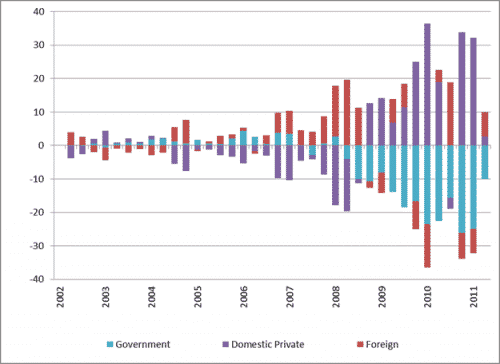
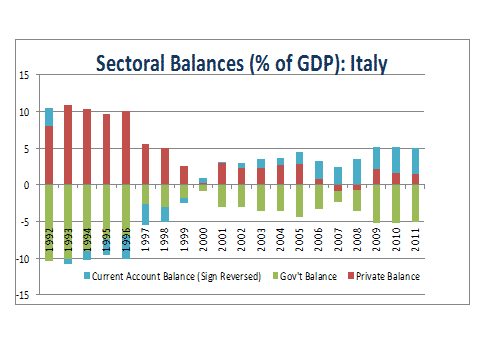

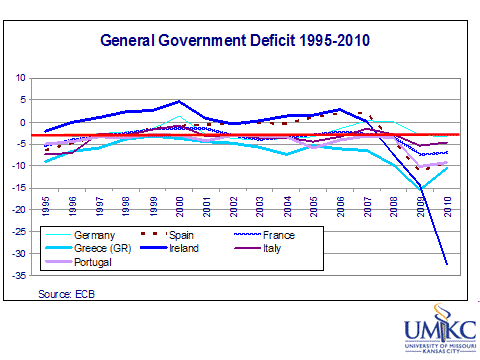
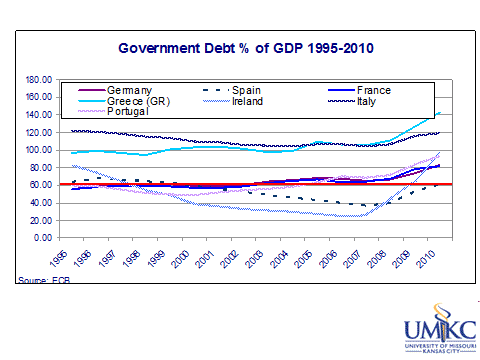

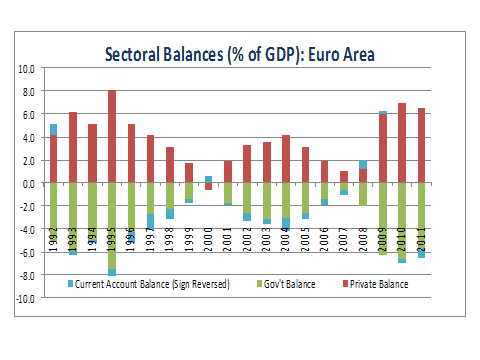
Comments are closed.